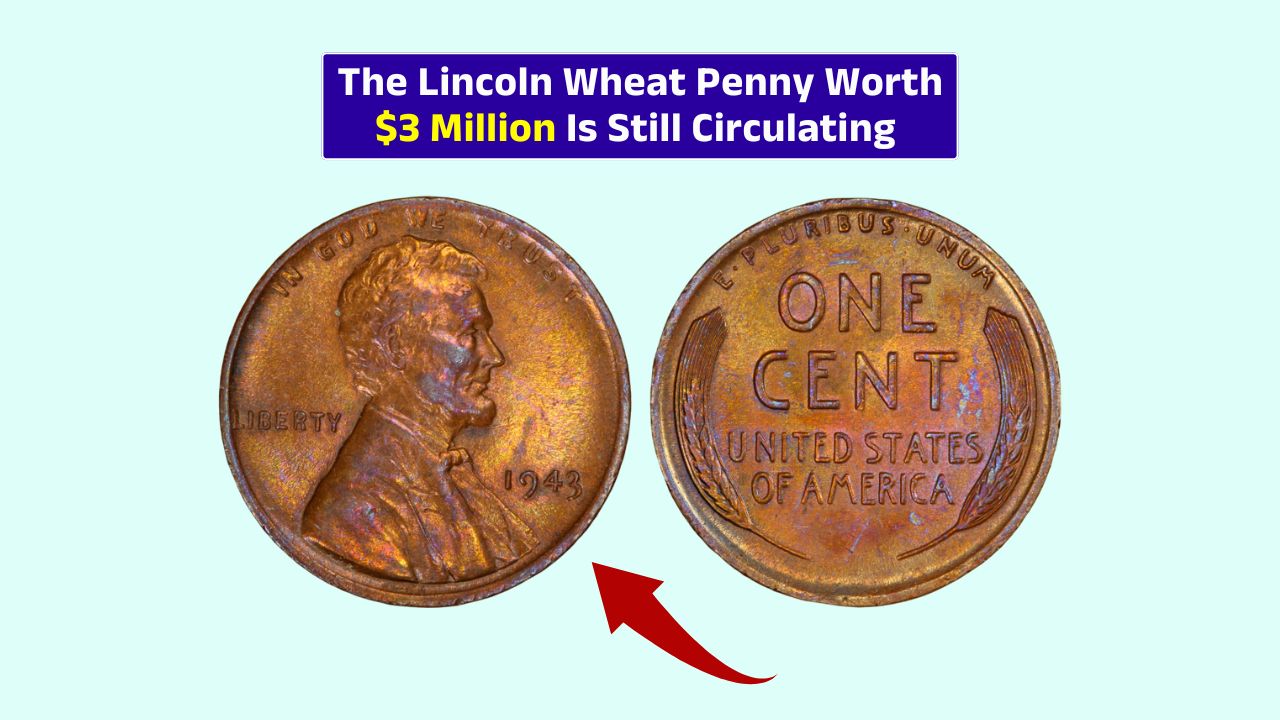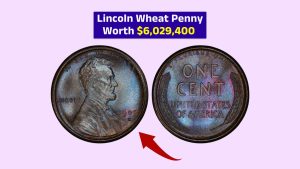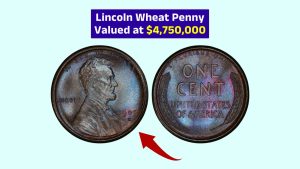Imagine finding a coin in your change that could be worth millions. That’s the magic of the Lincoln Wheat Penny — a common-looking coin that, in rare cases, can be valued at up to $3 million.
These pennies aren’t locked away in museums or safe deposit boxes either. Some may still be hiding in your piggy bank, old coin jars, or maybe even your wallet right now.
Let’s look into why these coins are so valuable and how you can spot one before you unknowingly spend it.
Background
The Lincoln Wheat Penny, also called the Wheat Cent, was minted in the United States from 1909 to 1958. The front of the coin features President Abraham Lincoln, and the reverse side shows two wheat stalks — hence the nickname. After 1958, the U.S. Mint changed the design to feature the Lincoln Memorial.
While most of these pennies are worth just one cent, a handful of rare versions — created due to mistakes or limited production — are now worth thousands or even millions.
Rarity
What makes some of these pennies so valuable? Two main things: rarity and history.
The most famous example is the 1943 Copper Wheat Penny. During World War II, the U.S. Mint made most 1943 pennies out of steel to save copper for the war. But a few copper versions were struck by mistake — and they’re now among the rarest and most valuable coins in the world.
Another prize among collectors is the 1909-S VDB Penny. This coin was produced in limited numbers at the San Francisco Mint, and only a few still exist in excellent condition. A clean, well-preserved version can fetch over $1 million.
Circulation
What makes this all the more exciting is that these coins might still be in everyday circulation. They could be sitting in your coin jar, hiding in a drawer, or mixed in with your change. Many people don’t know they have them — and that’s where the opportunity lies.
So yes, it’s totally possible that you’re walking around with a small fortune in your pocket without even realizing it.
Checklist
Here’s a quick guide to help you identify a valuable Wheat Penny:
| What to Look For | Why It Matters |
|---|---|
| 1943 Copper Color | Steel was standard; copper versions are extremely rare |
| 1909-S with “VDB” Mark | Early, rare edition made in San Francisco |
| Double Die Errors | Minting mistakes can drastically raise value |
| Condition (no damage) | The better the condition, the more it’s worth |
Use a magnet to test the 1943 pennies — if it sticks, it’s steel. If it doesn’t, it might just be that valuable copper version.
Action
If you think you’ve found a rare Wheat Penny, don’t clean it or spend it. Store it safely and get it appraised by a professional. Coin shops, shows, and auctions often have experts who can tell you if it’s genuine — and what it might be worth.
A surprising number of people have accidentally spent rare coins just because they didn’t know what to look for. Don’t let that happen to you.
Appeal
So why are these coins such a big deal to collectors? It’s a mix of history, scarcity, and thrill. These coins tell a story — from war-era minting errors to design changes and production shortages.
They’re not just coins — they’re pieces of American history that collectors are willing to pay a fortune for. And while most coins don’t carry much value, these rare few are worth watching for.
The bottom line? Don’t ignore that old penny. The next one you find could be worth more than your car.
FAQs
What years are the rarest Wheat Pennies?
1909-S VDB and 1943 copper versions are the most valuable.
How do I test if a 1943 penny is copper?
Use a magnet. If it doesn’t stick, it may be copper.
Where can I sell a rare penny?
Visit coin dealers, auctions, or certified numismatics experts.
Is cleaning a coin a good idea?
No. Cleaning reduces its value. Leave it as-is.
Can I still find rare pennies in change?
Yes, rare Wheat Pennies still turn up in circulation.



